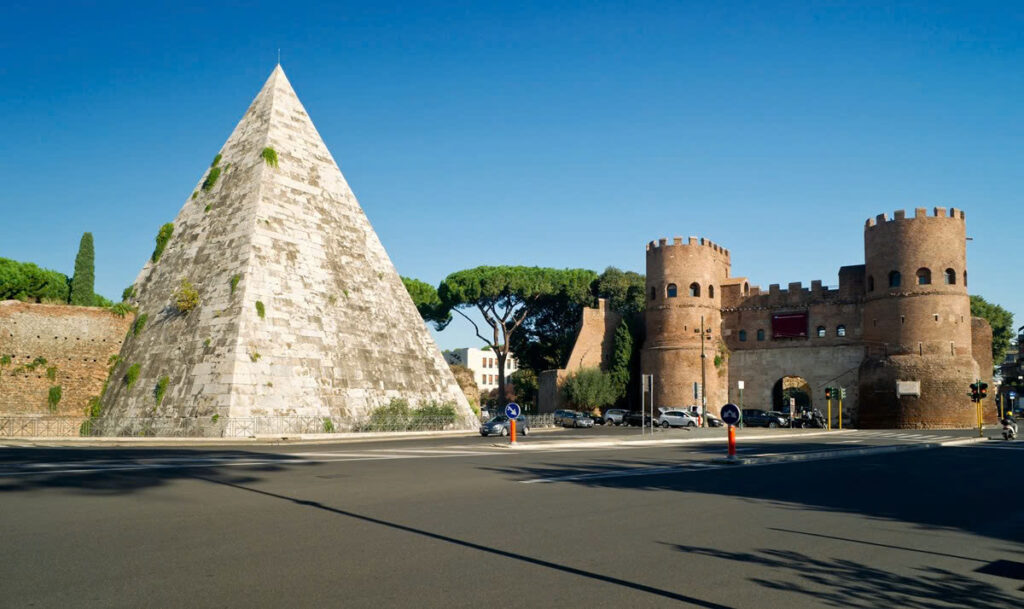A Hidden Treasure in the Eternal City

In a quiet corner of Rome, away from the typical tourist paths, stands an extraordinary sight that seems to defy its surroundings – the Pyramid of Cestius. This remarkable structure emerges unexpectedly among Rome’s classical ruins and Renaissance architecture, creating an intriguing architectural contrast that immediately captures visitors’ attention.
The Story Behind the Stone
Egyptian Influence in Roman Culture

Built between 18 and 12 BC, this unique monument was commissioned by Gaius Cestius, a Roman magistrate deeply influenced by Egyptian culture. Following Rome’s conquest of Egypt in 30 BC, Roman society developed a profound fascination with Egyptian traditions, particularly their approach to death and the afterlife. Cestius’s decision to choose a pyramid as his eternal resting place reflected this cultural admiration and ensured his legacy would endure through the ages.
Preservation Through Innovation

The pyramid’s exceptional preservation can be credited to a remarkable historical coincidence. During the 3rd century AD, as Rome faced mounting external threats, Emperor Aurelian incorporated the pyramid into the city’s defensive walls. This strategic decision not only protected the structure but also guaranteed its survival through centuries of warfare, environmental challenges, and urban development.
Architectural Significance

Standing proudly at 37 meters tall with a base of 29.6 meters per side, the pyramid showcases the Romans’ architectural expertise. Its white marble exterior, largely intact today, once created a stunning visual effect against Rome’s skyline. While the interior tomb chamber has lost much of its original splendor, including its elaborate frescoes and treasures, the structure’s austere beauty continues to captivate visitors.
A Symbol of Cultural Fusion

The Pyramid of Cestius represents more than just a tomb – it stands as a powerful symbol of Rome’s ability to embrace and adapt foreign cultures. In an era when Rome dominated the known world, this monument demonstrates how the empire incorporated elements from conquered territories, creating something uniquely Roman while honoring its influences.
A Modern-Day Marvel

Today, this architectural wonder holds its own among Rome’s more famous landmarks like the Colosseum and Pantheon. For travelers willing to venture off the beaten path, the Pyramid of Cestius offers a unique reward – a glimpse into a fascinating period when the world’s greatest empire looked beyond its borders for inspiration.
Visitor’s Note

For those exploring Rome, this extraordinary monument provides a perfect opportunity to escape the usual tourist routes and discover a lesser-known but equally impressive piece of Roman history. The pyramid serves as a testament to the eternal city’s rich cultural heritage and its enduring ability to surprise and inspire visitors from around the world.

